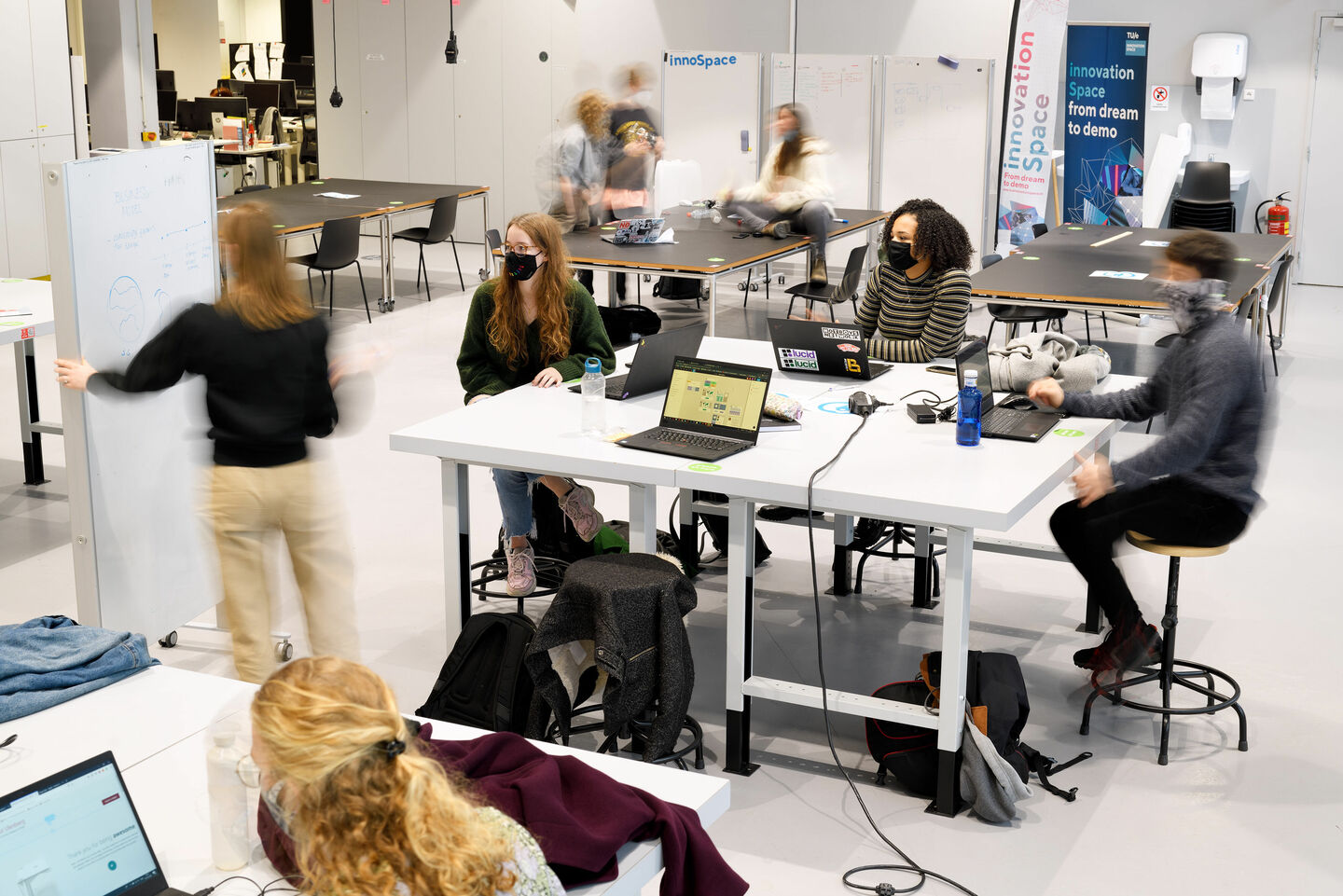
Challenging students with active learning
In 2024, TU/e wants to know how Challenge-Based Learning fits into its curriculum
How do you foster an active approach to learning? To find that out, TU/e launched a taskforce Challenge-Based Learning (CBL) this year. The aim is that by 2025, the university will have figured out how and to what extent it can implement CBL in its education. How do you use it in a blended learning environment, how do you test the acquired knowledge of students, and how do you organize this? Questions abound, but there’s also more than enough time to make evidence-based decisions.
Giving shape to challenge-based learning at TU/e is no easy task, but the key lies in continued development, says educational innovator and driving force behind the program Michael Bots. “We are currently gaining quite a lot of experience with various experiments in this area. But we also learned from past innovations, such as Design-Based Learning, student teams, USE Learning Trajectories, etcetera. We will need to use the lessons learned from this in order to arrive at a successful curriculum for everyone,” the program manager CBL says.
CBL promotes learning, mostly in multidisciplinary groups, through solving open-ended problems that are relevant to society. These problems challenge students to give shape to their learning process, but they don’t have to do it on their own. “There is a network of fellow students, teaching assistants and teachers who provide input and feedback on what the student indicates he or she wants to learn. Apart from operating as an expert and coach, the teacher will increasingly take on the role of overall quality controller,” Bots says. Whether CBL can be implemented with the current staff-student ratio of 1-20, is one of the subsidiary questions that are being looked into.
“What we want to be careful of, is not to impose CBL on teachers,” says assistant professor and ISBEP project coordinator Peter Ruijten-Dodoiu. “Not everyone at TU/e agrees with Strategy 2030, in which CBL features as one of the university’s spearheads. There are quite a few people who wonder why it’s necessary to merge all disciplines, because they worry that it might be at the expense of disciplinary knowledge, which is so important for our students. But the point is that TU/e’s educational vision is directed from the perspective of students. We want our students to have the best possible prospects on the job market. We believe that we can achieve that by providing them with as much experience as possible in situations they will find themselves in later in their careers. That means working in multidisciplinary teams.”
Another question that still needs answering, is at what moment in their program students should start to work with CBL. PhD candidate Elisa Bergkamp, who received an innovation fund from 4TU to make her education at Mechanical Engineering challenged based, has the following answer:
“We’ve noticed that gaining thorough technical expertise is a challenge in CBL education. Without a sound basis, it’s difficult for students to gain this knowledge independently. That is why it’s very important to have a proper balance in place between a more traditional way of passing on knowledge by a teacher, and the implementation and expansion of this knowledge with CBL. This can be done from the start of a program, as long as the expected knowledge in CBL education corresponds with the professional skills students have acquired up to that point. Students need to be challenged in CBL education, but they need to be able to take the steps.”
The first steps are currently being taken at ISBEP, the USE learning trajectory Physics of Social Systems, and the Mechanical Engineering course Energy Storage and Transport. Below, you can read how the responsible teachers and the students experience it. Above, on the main picture you see a group of students in TU/e innovation Space working on the USE Learning Line Responsible Innovation for the World.
ISBEP: Graduating with teamwork
ISBEP, which was set up by Miquel Bruns, Isabelle Reymen and Rick de Lange, allows students of all programs to carry out their Bachelor End Project (BEP) at TU/e innovation Space. During a pitch event in Matrix (or online), students get to choose a challenge put forward by a company, research group, student team and sometimes even an artist.
Growing number of participants
ISBEP has been running for over three and a half years now, and the number of participating students has grown steadily. The number of students participating in ISBEP (currently twelve) is usually a bit lower in the first semester of an academic year than in the second semester. So far, the largest group consisted of 45 students; the coordinator expects between 50 and 60 registrations in February 2021. His goal is two hundred students per academic year as of 2025.
You will not find any Industrial Engineering students (who always follow a business internship for their end project) or Computer Science students among this group any time soon. “The BEP for Computes Science students is an extremely complicated group assignment that can’t be carried out by less than ten software students, but what they do learn from it is just how difficult it is to realize something with nine others,” Ruijten-Dodoiu says.
It’s important to him that students take their time for teambuilding. Next, they need to define the problem themselves and describe what they hope to achieve during the semester.
Sometimes, a challenge recurs several times. “Some things can’t be achieved in one semester, for example when a group decides to build an autonomous, electrically driven vehicle with three wheels. We hope to get one step closer to the solution next time,” Ruijten-Dodoiu says.
Assessment
Currently, innoSpace has no influence whatsoever on the assessment of students who participate in ISBEP. Each student is assessed by an expert from his or her own department. Ruijten-Dodoiu doesn’t want to make ISBEP mandatory for all TU/e students. “It is and will remain a choice. However, I expect it to be the default in the future, whereas today it’s something special. But we have to wait and see whether it will get to that point, that is why we are experimenting to find out what works and what doesn’t.”
Gerbert van der Beek: “This is a valuable experience”
Mechanical Engineering student Gerbert van der Beek is very enthusiastic about the fact that he doesn’t have to carry out his Bachelor End Project individually but that he gets to collaborate in a group instead. He hopes to be finished with his project by January. “During job applications for a temporary job I hope to find before I start with my Master’s program, I noticed already how valuable an experience this is. The purely study-related knowledge is expanded with relevant skills.”
In collaboration with two Biomedical Engineering students and one Psychology & Technology student, Van der Beek optimizes an OCT machine, an imaging technique that uses light to test for skin cancer. “It’s interesting to see how things are dealt with differently in a world that is ‘different’ from mine,” he says. “Mechanical Engineering has a rather traditional setup. Now, I get to experience how it works at Biomedical Engineering.” Their client is a PhD candidate who conducts her research at the dermatology department of Maastricht UMC.
“The first few weeks of ISBEP are quite tough, you need to get used to each other, and it wasn’t immediately clear to us how the assignment and the requirements of the three different departments matched. Our client wasn’t familiar with ISBEP yet, and there was some miscommunication in the beginning. That’s a point for improvement, as far as I’m concerned. New clients need to know from the start what the departments specifically expect from students.”
Van der Beek is completely in favor of introducing all students to CBL. “Learning how to work in a team is good for everyone who aspires to a career in industry. And if you come to realize that working in a project doesn’t suit you at all, you might consider an academic career.”
A challenging USE Learning Trajectory
There are seventeen different USE Learning Trajectories, all of which consist of three courses. Students who opt for the learning trajectory Physics of Social Systems will be dealing with CBL. In a multidisciplinary team of four or five students, they define their own project within the field of crowd dynamics. Federico Toschi, professor of fluid dynamics, is the teacher in charge of the group. It’s important to him that students have the freedom to describe the challenge themselves, and to determine their approach.
Peer review
The students focus on crowd control on a train platform, an assignment commissioned by Dutch railway company ProRail. Where and how far apart should passengers stand in order to board a train as effectively as possible, for example. Toschi often lets his students work with a combination of scrum and CBL. “As of week three - after the start in September - they work in small groups,” he says. “They give a short online stand-up every day, and we hold a review meeting every Monday, during which they present new results to each other and to the teachers. Here, too, it’s important that they reflect within the group on how things went. Then they make a new week planning, this allows them to continuously make adjustments when necessary.”
The final assessment will be given by teachers, ProRail, fellow students from other groups and team members. It consists of four components: a report, a presentation, a poster and peer review.
Difficult
Toschi, who says that his students are highly motivated, sees where the difficulty lies. “They’re not quite used to teamwork in a scrum framework. I think they still need to learn the right order of steps that makes things run more smoothly, and that will help them coordinate the division of tasks and the process of reflection within the group.”
Esther Maas: “The ball is in your court”
Esther Maas is halfway along her USE Learning Trajectory Physics of Social Systems. ProRail commissioned a broad assignment to conduct research into a more efficient crowd flow on train stations. Together with three others, she has set herself the goal of making boarding for wheelchair users faster and friendlier. Other groups focus on comfort of passengers, or the corona measures. They are provided with data from sensors at train stations, installed by ProRail.
“What’s great about this learning trajectory, is that technology is linked to psychology and ethics. We also think about whether it’s ethically responsible to filter human behavior from data, for example,” Maas says.
“Supervision for this course is better than for all other courses I’ve taken so far,” the second-year Electrical Engineering student says. “The group and the teacher assistant are in touch every day, there’s a meeting every Monday (and Thursday if necessary) with teachers in the fields of data, psychology or ethics. There’s good contact with the client and the professors.”
Getting used to CBL took Maas some time, incidentally. “Asking your professors for help feels like a big step. But the ball really is in your court, so you don’t have a choice. I learned quickly how to seek contact and ask for help. And my planning skills have greatly improved.”
Maas does however experience a high work pressure, “but that’s also because we take it seriously and like to do our work well.” The daily scrum meeting may be short, but she does experience it as a regular fixture of the day. “We all have different schedules, which makes it rather difficult to find the right moments. But all four of us see it as a nice opportunity to work with this kind of data, and we hope to make a societal impact.”
Making Mechanical Engineering suited for CBL
Mechanical Engineering has a long history of project education. Back when the current students were still walking around in diapers, the department had already made OGO (currently known as Design-Based Learning, or DBL) part of its curriculum. Certain elements of DBL - applying your knowledge in a group - feature in CBL as well. However, the setting with traditional mechanical engineering applications proves to be rather ill-suited for an open challenge that requires students to think out of the box. Associate professor Clemens Verhoogsel and PhD candidate Elisa Bergkamp teach the second-year course Energy Storage and Transport together, and came up with a solution.
Adjustments
“We had to change a few things before we could make the course suited for CBL,” Verhoogsel says. After experiences during a first pilot (academic year 2019/2020), three adjustments were made. Bergkamp: “We gave the students much freedom in their choice of subject, and that wasn’t easy for them. That’s why we provided a social context, in this case the energy transition. We also added more feedback moments and, most importantly, we made the groups smaller. Originally, a group consisted of some eight students, now the maximum number is five. During the pilot, we saw that some students failed to take the initiative, because others had made decisions or filled in tasks first.” In Bergkamp’s experience, a more open approach to education leads to a greater need among students for feedback on whether or not they’re on the right track. “That is why in week one already, we as teachers assess a video in which the teams share their first ideas.”
Alumna
Bergkamp took part in OGO projects back when she was a student. “We knew there was one answer we had to work towards. This meant that we were very focused on the right answer, not on what we were learning in the process. With CBL, it might happen that the final product doesn’t work, but the student will have become very good at analyzing.” She is glad that education has also become less abstract, and that the groups have gotten smaller. “For half a day a week, the students worked at innovation Space, which has great facilities. We were present there to stimulate the students and to answer questions. That’s something some of them still really need to learn.”
Sem de Jonge: “Worked on what I wanted to learn”
Sem de Jonge had already experienced DBL during his first year at Mechanical Engineering, and he expected a similar approach for the elective course Energy Storage and Transport. But it turned out that greater student input and freedom are standard there, which ‘pleasantly surprised’ him. At the start of the project, the students were asked to identify their strengths and weaknesses. Based on that, they then defined their personal learning objectives. One of De Jonge’s objectives was to improve his academic writing skills and to explore the program MATLAB. “My fellow students gave me feedback. We had a weekly moment for reflection. This means that you’re focused on the course, but also on the things you yourself want to learn.”
De Jonge would like to tell introverted students that CBL is a good way to develop yourself. “You’ll need more and more collaborative skills in the course of your studies. In our first week, we had to define the things we wanted to learn, as well as the things we were good at already. Every student at TU/e has a talent for something. Write down your ideas, and when you have a hard time expressing those thoughts, turn it into a personal goal. The group will help you with that.”
Groep-één: “It’s good to be driven by enthusiasm, but it shouldn’t lead us”
Ralph van Ierland, chair of student group Groep-één, is student representative in the taskforce CBL. “If it turns out during the next five years that CBL is not right for TU/e, we will not implement it. But we do hope, naturally, that this project will eventually result in a structural educational change.”
Van Ierland wants to make sure that the implementation of CBL won’t be at the expense of the flexibility of education that currently exists at TU/e. “Think of extra-curricular activities, for example, such as a board year or membership of a student team. But it’s important too for students who need more flexible education for personal reasons.” In addition, learning about your own professional field is important as well. “The fact that multidisciplinary education allows students to learn from each other is great, but you should also continue to learn from your fellow students within the same program. As a mathematics student, I’ve learned so much from my fellow students at Mathematics and Computer Science about how to approach certain mathematical problems. How do you carry out this analysis? How do you approach this problem? That’s something we shouldn’t give up.”
It’s good to be driven by enthusiasm, but it shouldn’t lead us, Van Ierland says. He warns against pitfalls. “How do we make sure that a student acquires the necessary skills and won’t choose the tasks he already knows how to do? How do we make sure that the student who is good at programming doesn’t always take on the programming tasks, for example.” Groep-één wants to look into ways to improve student involvement. “The most important thing, I believe, is that students are positive about it.”

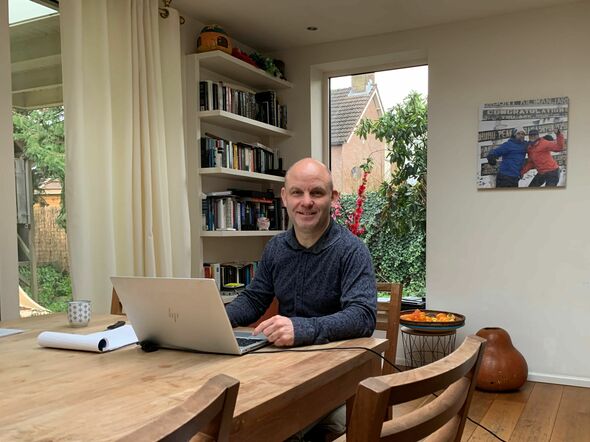
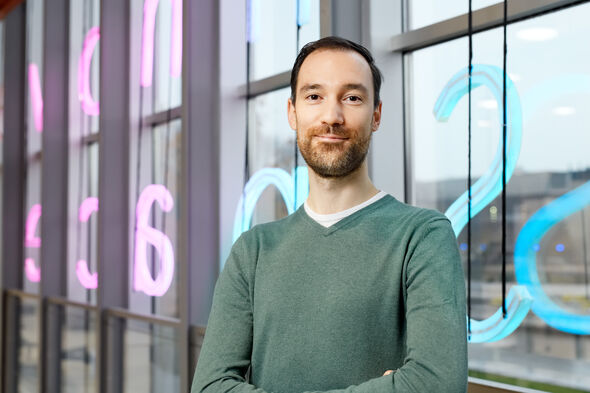

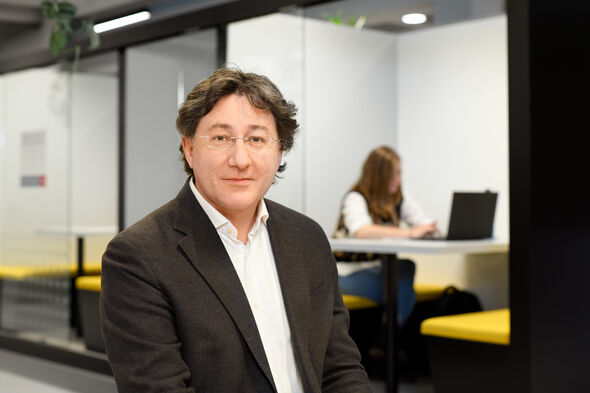
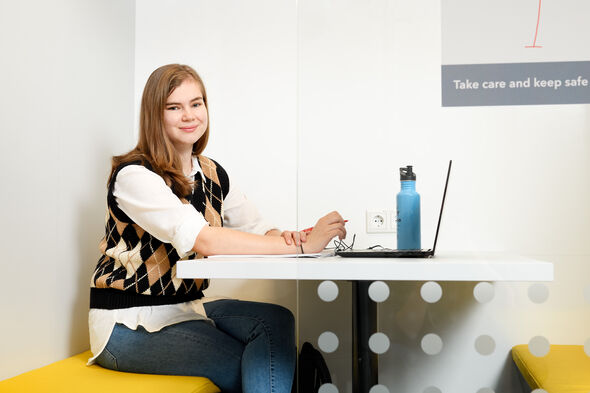
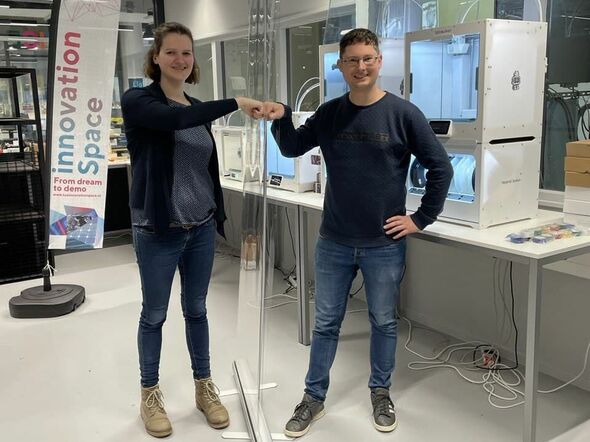
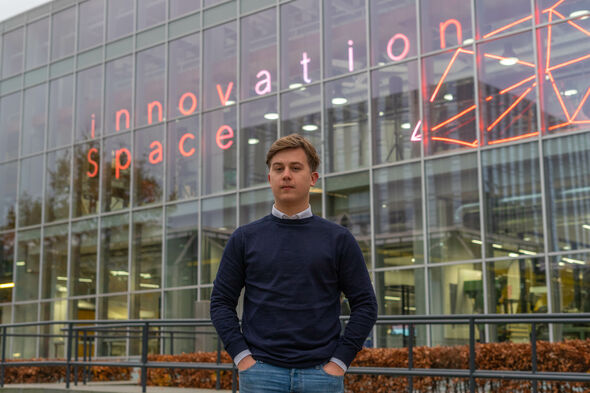
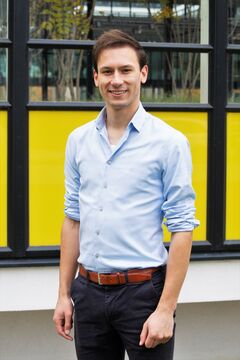
Discussion